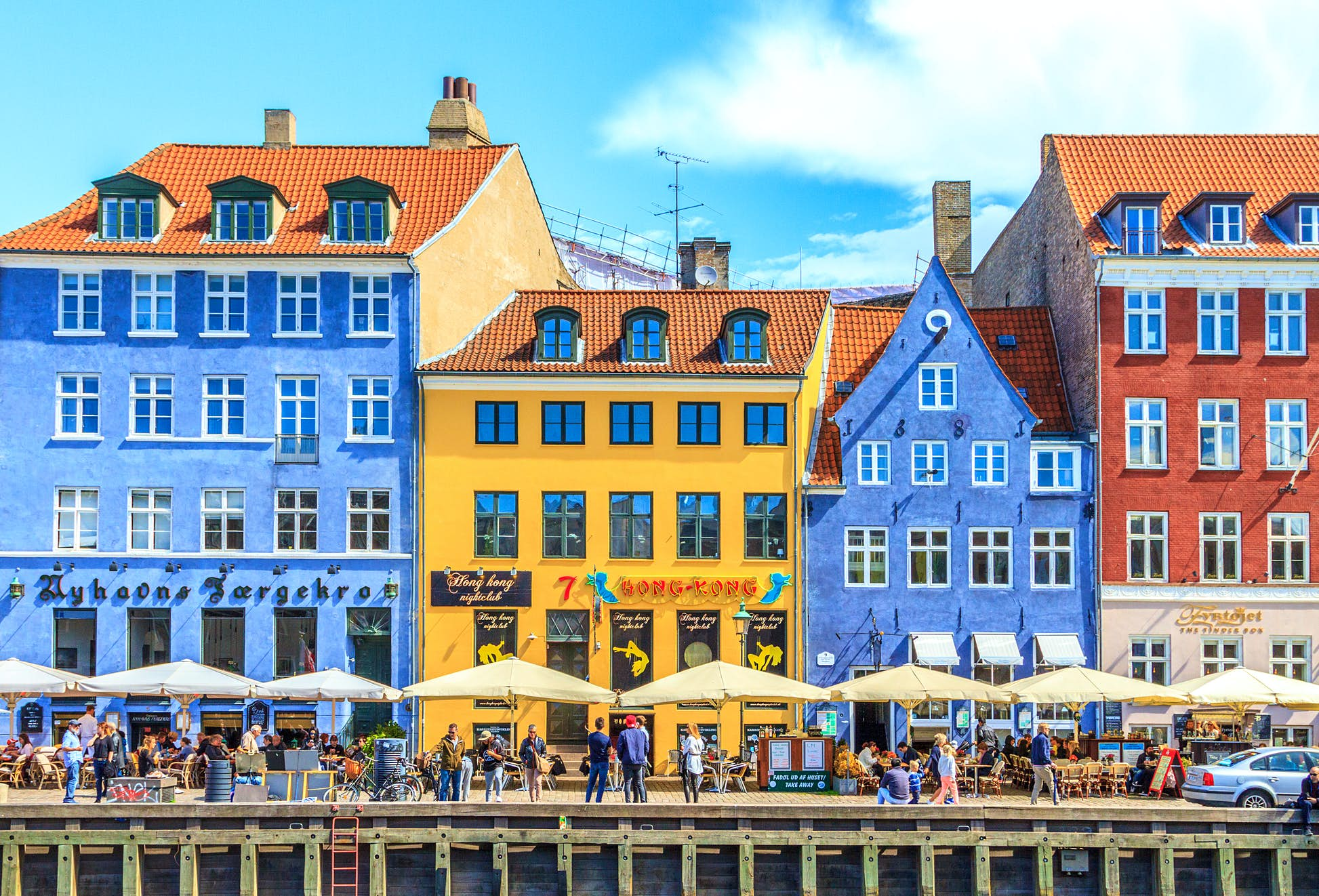
Europe is starting to reopen - here's what you need to know about each country's rules
TripFalcon June 17, 2020
Last Update: 2024-01-22 11:10:51Some European countries are beginning to gradually reopen their borders this week in an effort to kickstart the tourism season but rules are far from coordinated.
France, Germany, Switzerland, Belgium, Greece and the Netherlands eased travel restrictions and opened their borders to tourists from most nations within the European Union on 15 June. They join countries like Italy, Cyprus and Croatia who have already begun to welcome foreign visitors as the continent starts to emerge from the coronavirus crisis.
But restrictions on European travel are still in place elsewhere. Spain, for example, is keeping its borders closed to selected countries until 21 June, and Denmark is essentially closed to most visitors until at least September. If you're planning to travel soon, here's what you need to know.
Austria
Austria opened its borders to travellers from 31 European countries on 16 June but quarantine restrictions remain in place for travellers from Portugal, Sweden, Spain or the UK who do not submit a COVID-19 test.
Belgium
As of 15 June, Belgium opened its borders to all EU member states and Norway, Switzerland, Iceland and the UK. There are no quarantine requirements.
Bulgaria
Bulgaria is open to travellers from the EU, as well as the UK, Bosnia, Serbia and Montenegro. People arriving from Belgium, Portugal, Sweden, the Netherlands and the UK face a mandatory 14-day quarantine.
Croatia
Travellers from Austria, the Czech Republic, Estonia, Germany, Hungary, Latvia, Lithuania, Poland, Slovakia and Slovenia are allowed in. Nationals of other EU countries will have to show good reason, such as accommodation booking. Croatia is still closed to travellers from outside of Europe.
Cyprus
Cyprus has divided countries into two categories, A and B, based on coronavirus infection rates. Countries in category A have been allowed to travel to Cyprus since 8 June. From 20 June, countries from category B will be allowed to enter. An entry ban on citizens from the UK, Ireland, France, Spain, Italy remains in place until 1 July.
Czech Republic
From 15 June, the Czech Republic has issued a traffic light system with people arriving from low-risk countries (marked green) allowed to enter without any issues. Those from medium-risk countries (orange) or high-risk (red) will be denied access. The UK is medium-risk, while Portugal and Sweden are high-risk.

Denmark's borders will remain closed to citizens from most countries until September ©gmlykin/Shutterstock
Denmark
Denmark has opened its land borders to visitors from Germany and Norway, and is allowing tourists from Iceland but only if they can prove they are staying in the country for at least six nights. The border will remain closed to citizens from elsewhere until at least September.
Estonia
Estonia opened its borders to visitors from 24 low-risk European countries on 1 June without quarantine requirements. Travellers arriving from elsewhere in Europe must quarantine or present a certificate proving they have tested negative for COVID-19. The list is available here and is revisited every Friday.
Finland
Finland eased restrictions on visitors from Norway, Denmark, Iceland, Estonia, Latvia and Lithuania but remains closed to other countries until 14 July.
France
Borders are now open to most European countries. Travellers from the UK have to self-isolate for 14 days.
Germany
Germany reopened all borders on 15 June. An entry ban remains in place on travellers from outside of Europe.
Greece
Flights to most countries resumed yesterday, except those deemed high-risk by the EU’s aviation safety agency, EASA. Travellers from France, the UK, the US and Belgium face mandatory tests and quarantines. Travellers from low-risk countries outside Europe such as Australia, New Zealand, Japan, South Korea, China, Lebanon and Israel are permitted to travel to Greece.
Hungary
Hungary has partially opened its borders to citizens from Austria, Croatia, the Czech Republic, Germany, Slovakia, Serbia and Slovenia. Travellers from elsewhere are banned until further notice.
Iceland
Iceland opened its borders on 15 June but visitors are required to undergo a COVID-19 test on arrival and download a contact tracing app. There is still a travel entry ban in place on countries outside Europe.

Some countries such as Ireland (pictured) have kept their borders open throughout lockdown ©Patryk Kosmider/Shutterstock
Ireland
Ireland has kept their borders more or less open throughout lockdown but 14-day quarantines remain in place for most visitors, except for those arriving across the border from Northern Ireland.
Italy
Borders have been open since 3 June to all EU and Schengen area member states, as well as the UK. There are no quarantine requirements unless travellers arrived from a third country outside Europe.
Latvia
Latvia has waived quarantine restrictions on travellers arriving from European countries where infection rates are low. People who spent at least 14 days in Latvia or Lithuania before their arrival are also exempt. The list is updated every Friday.
Lithuania
Lithuania has opened its borders to travellers arriving from 24 European countries, without a 14-day quarantine requirement. The list of countries permitted to enter Lithuania is revised every Monday.
Luxembourg
Luxembourg has no restrictions in place for arrivals travelling from other European countries.
Malta
Tourists from most EU and the Schengen countries can visit from 1 July with exceptions. Entry from Sweden, the UK and high-risk areas in Italy, Poland, Spain and France is banned until further notice.
Netherlands
The Netherlands has removed entry and quarantine restrictions on arrivals from the EU and other Schengen countries, except for Sweden and the UK.

The Netherlands' borders are open ©kavalenkau/Shutterstock
Norway
Norway is welcoming visitors from neighbouring Nordic countries, except Sweden, and will review travel restrictions again on 20 July.
Poland
Poland's borders are open to travellers from other EU countries without quarantine requirements.
Portugal
Portugal resumed international air travel this month with European countries and those farther afield, including the US. There is no quarantine requirement for arrivals.
Romania
Travellers from the EU, as well as Switzerland, Liechtenstein, Iceland and Norway are allowed to travel to Romania.
Slovakia
Slovakia's borders are open to citizens from most European countries apart from those deemed high-risk such as Sweden and the UK.
Slovenia
Slovenia's borders are open to citizens from most European countries but a two-week quarantine period is required for arrivals coming from Sweden, the UK and non-EU countries including Russia.
Spain
From 21 June Spain will allow travellers from the Schengen area to visit. Travellers from other European countries are welcome from 1 July.
Sweden
Sweden currently has no entry restrictions in place.
Switzerland
All restrictions lifted and no quarantine required for those arriving from EU countries, as well as Norway, Iceland, Liechtenstein and the UK.
United Kingdom
The UK's borders remained never closed but since early June a mandatory two-week quarantine period is required for all arrivals, apart from those arriving from Ireland, the Channel Islands and Guernsey.

